- Zulu Traditional Attire reflects creativity, status, and allegiance to the African tribal roots
- The Zulu attire is mostly made from animal skin, dry grass, glass, and beads
- Although civilization has come to say, the Zulu modern attire still reflects the long-aged tradition
Zulu Traditional Attire is deep-rooted in the culture and history of the Zulus to protect their rich cultural heritage and lifestyle. Across valleys and mountains lies the largest ethnic group in South Africa, the Zulu Tribe with over 10 million speakers. The Zulus are mostly identified for their unique style of expression, identification, and beautification through beads and animal skin attire.
Over the years, these traditions have been passed like an old family album from generation to generation. Rather than losing the fabrics of their existence, the Zulus have transformed their culture to meet modern-day fashion trends. The Zulu traditional attire has survived colonization and continues to make waves on the front page of popular fashion magazines.
A Look at the Primeval Zulu Traditional Attire
The Zulus are known for their unique style of dressing which is mostly colorful, heavily beaded, and uniquely different. Their style of dressing offers them more than just coverage but also an identity and way of interaction while differentiating age, marital status, and lifestyle. Importantly, the Zulu women use their dressing to mark transitioning in every stage of their life.
– Single Women: A woman in this category is considered unmarried (Intombi). She is expected to keep her hair short and the upper part of her body bare while wearing a short skirt made of grass or beaded cotton strings. The practice of this tradition dates back to c.1895 and is still practiced until this day. The only change is the use of a bigger shirt to completely cover the lower region.
– Engaged women: At this stage of a woman’s life, she is permitted to grow her hair and also cover the upper part of her body. The groom considered her voice and his family feel respected.
– Married Women: When all traditional rites have been performed, the woman completely covers her body as a sign that she is married. She is presented with a 61cm leather skirt (Isidwaba) by her father and covers her breast with a cloth. She wears the Isidwaba for holy occasions such as marriage, and the sacred dance. The Isidwaba is also adorned with beads.
It is worthy to note that the Isidwaba attire holds great significance to the bride. Firstly, it accords her respect as a married woman and represents transitioning from her parent’s family into her husband’s house. Secondly, she activates the ancestral protection for her family and secures fertility for herself. Lastly, she is praised by the family of her husband as a virtuous woman. The married woman is also allowed to wear a circular shaped cotton or grass hat named the ‘izicolo’ in other to protect her from the harsh sun.
– Pregnant women: A woman expecting a child wears the same attire as a married woman. The only differentiating piece is the ‘isibamba’, a thick belt made from dried grass and decorated with beadwork, to aid her swelling stomach.
– Zulu Men: The traditional men of Zulu are not exempted. They use animal skin if different patterns and feathers. Men wear the ‘amashoba’, the tufts of a cow’s tail on their upper arms and knee to appear bigger. They also wear the ‘ibheshu’ to cover their buttocks and headband to represent their status.
12 Traditional Attire Inspired by the Zulu Tribe of South Africa
While civilization may have influenced some African traditions, the Zulus continue to uphold their cultural identities as their heritage. The Zulu tribe has redefined these old traditions into the modern fabric of their existence in every way possible. This article relates to different modern attire presented by the Zulus.
1. The Fully Beaded Attire

Beads are an important aspect of the Zulu traditional attire. More than using beads for adornment and beautification, the Zulu tribe of South Africa uses beads for identification and communication. They craft beads into different shapes and forms to enable them to relate better.
In ancient times a woman wearing two triangle beads merged together like a diamond is considered a married woman while married men wore hourglass-shaped beads. However, with modernization, the Zulu tribe wears fully beaded attire for several vents to represent their culture.
2. The Unakoti Gown
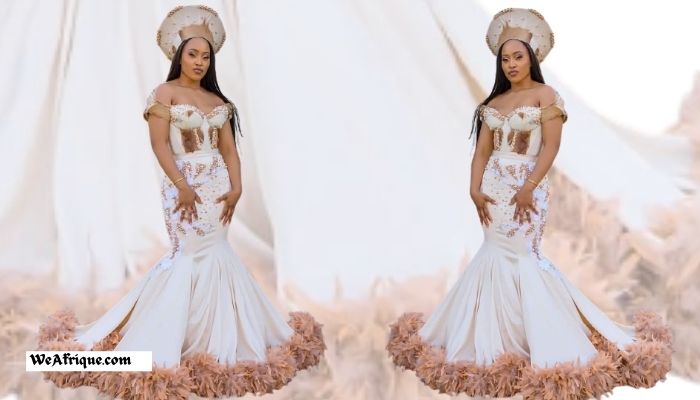
One could literally tell from a distance that the Unakoti gown is inspired by the Zulu tribe of South Africa. The elegance and beautiful interaction between feathers and cowhides can only be creatively designed by the Zulus.
The Unakoti gown is made in different colors and patterns to buttress the diversity and culture of the Zulus. Although the Unakoti gown is inspired by brides, it can also be worn for other occasions outside weddings.
Read Also: South African Names – 150 Popular South African Names And Meanings
3. Zulu Mermaid Gown
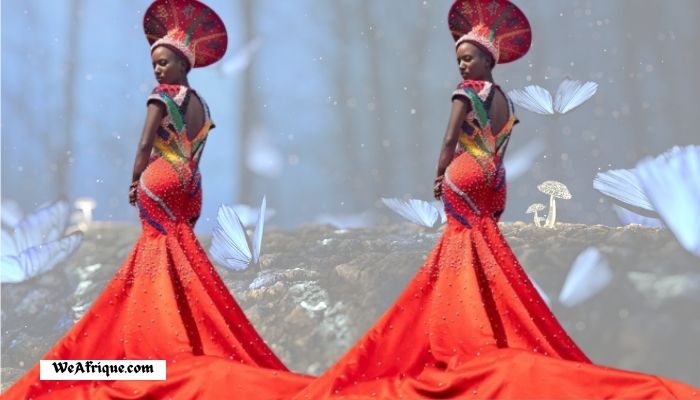
The mermaid gown was originally introduced in the 1930s by a french designer, Marcel Rochas. However, Zulu brides have personalized this long hourglass-shaped gown into their favorite wedding style to give them a perfect mix of sexiness and femininity.
The bride beautifies her neck and waistline with beautiful Zulu beads to appear colorful and beautiful. She also wears the Isicholo hat which is made of colorful beads to represent respect to her inlaws and attract blessings from them.
4. The Tulle Inspired Zulu Attire
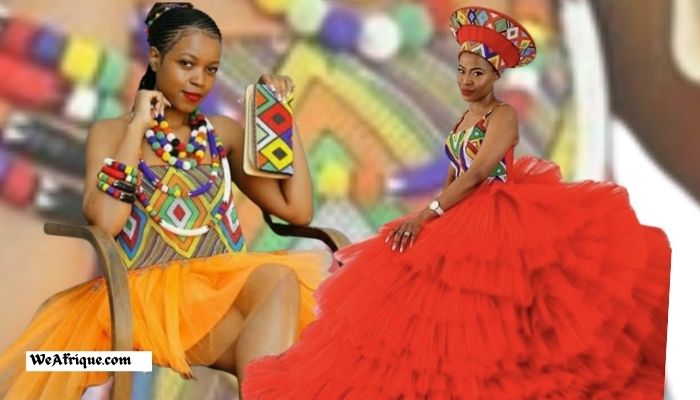
The tulle dress is made from stiff, fine netting fabric with is mostly used to make gowns and wedding veils. It is mostly made of fibers like polyester or nylon and is versatile for any occasion. The Zulu tribe of South Africa wears the tulle dress in different ways. Some make evening gowns out of it while others wear it as a skirt with colorful beadwork. It is used to convey modesty when used as a wedding veil.
The tulle dress dates as far back as the 1700s in a french city known as Tulle. Today, this fine easy-to-wear outfit has become a common traditional attire among the Zulus following its lightweight and comfortable feeling.
5. Umblaselo Zulu Traditional Attire
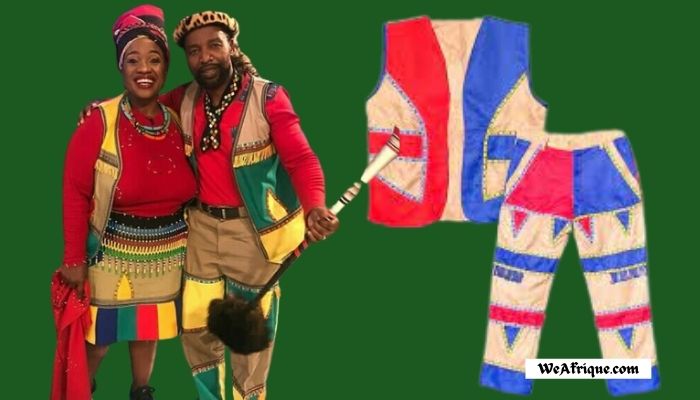
When the creativity of the Zulu tribe comes to play, the Umblaselo attire is being presented. Before fashion took its grounds, old garments were patched together to prevent a garment from fading out. Interestingly this age-long traditional practice has become a fashionable sensation for Zulu men and even African men.
Different fabrics of different colors are joined together to make the Umblaselo attire. The attire is said to be made manually to present the creativity of the Zulu designers. In recent times, Zulu women have joined in promoting this fashion trend. Umblaselo is won to different traditional engagements.
6. Zebra Inspired Black and White Attire
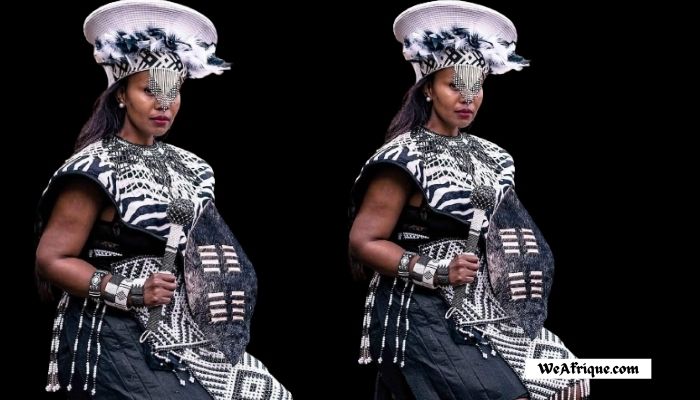
This attire is inspired by the beautiful monochrome imprints of the Zebra’s skin. It is worn as a gown and accompanied by a ‘Ndebele’, a short-sleeved top made with zebra prints. It can also be worn as a cotton-woven gown. Whatever way the beautiful women of Zulu choose to flaunt this dress, they never forget to add colorful beads to fully represent the Zulu tribe and also adorn their arms with feathers.
7. Dashiki Zulu Traditional Attire
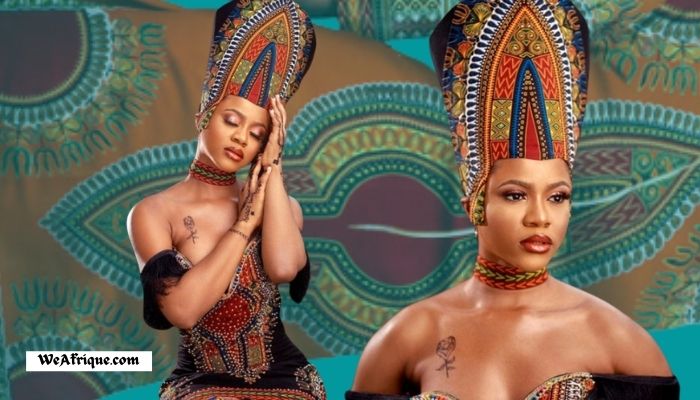
The Dashiki outfit is traditional clothing that is most common in West Africa. However, it is also common in East Africa, especially in countries like lie Tanzania, Kenya, and Somalia.
Traditionally, the loose-fitting colorful shirt with an open v-neckline is worn as casual wear by males and females. Since its origin isn’t particular to any tribe, the Zulu have found a way to personalize it by wearing it the Zulu way. The dashiki outfit is decorated with beads when worn as a gown.
8. The Double Pleated Skirt and Matching Bralette
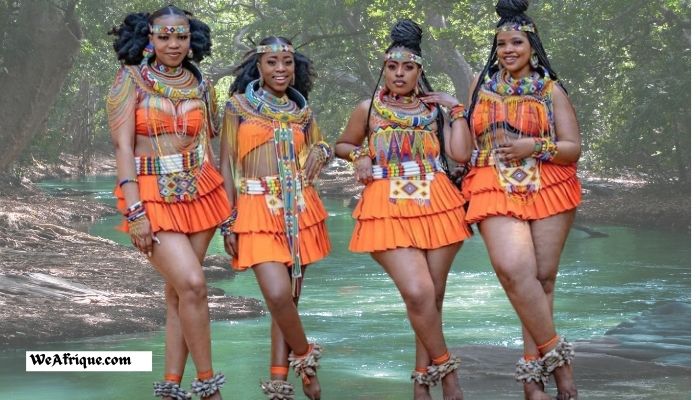
The Zulu tribe seizes every opportunity to showcase their cultural attire. Not only do they flaunt it during weddings but even at social gatherings. The double-pleated skirt and matching bralette is mostly worn by dancers when invited for performance. Moreso, it can also be worn as a traditional costume during cultural gatherings.
Read Also: Kikuyu Tribe- 10 Interesting Things No One Ever Told You About Them
9. The Leopard Imprint
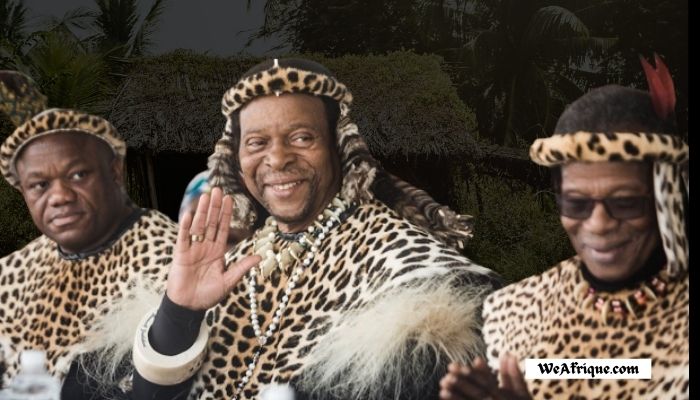
This style of dressing by the Zulus represents one’s position in the community. Only those from royal families and tribal heads are permitted to wear the leopard imprints. This is because the leopard is considered to be the king of predators and signifies nobility, courage, and honor. It is also said to boost a man’s confidence and strength following the myth that surrounds monochromic colors.
The leopard imprint attire is usually accompanied by a matching ‘umquele’, a headband made with fur used by the Zulu warriors before the colonization of South Africa. In recent times, leopard skin attire is not only worn by kings but even women. It can be worn with plain trousers, a skirt or a gown.
10. Intombi Yellow Tube and Yellow Skirt
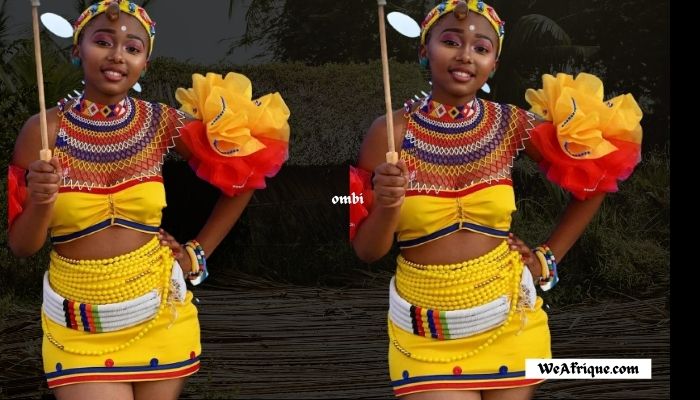
Colors hold great significance to the people of Zulu. The Yellow-colored beads signify wealth and fertility. It is worn alongside a matching headband, bralette, and short skirt. Usually, an ‘intombi’ lady flaunts her beauty in this attire until she is engaged. This beautiful attire can be worn to traditional gatherings and weddings.
Read Also: Helen Joseph Was A Famous South African Activist – 10 Facts About Her
11. The Kente Zulu Traditional Attire
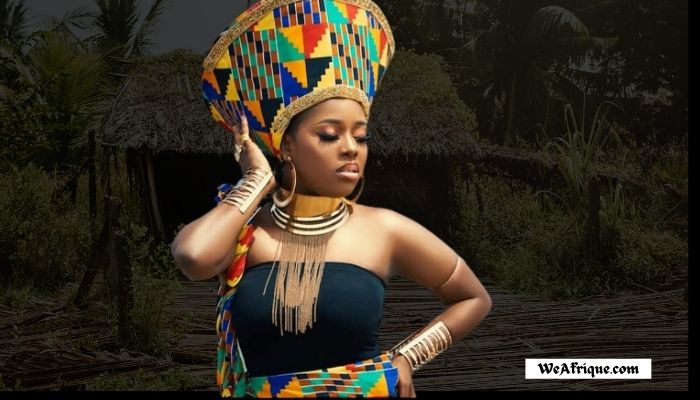
The Kente attire is made from handwoven silk or cotton material indigenous to the Ashanti and Ewe people of Ghana. Dating back to the 11th century, Kante was worn majorly by queens and princesses. However, the wearing of Kente has become more common throughout West Africa and even more special to the Zulu tribe who have added a touch of their culture to it.
The Zulu tribe of South Africa wears the Kante attire to commemorate special occasions like weddings and cultural engagements. It is worn alongside an Isicholo hat, bangles, anklets, and the colorful beads of the Zulus.
12. The Zulu Warrior Outfit
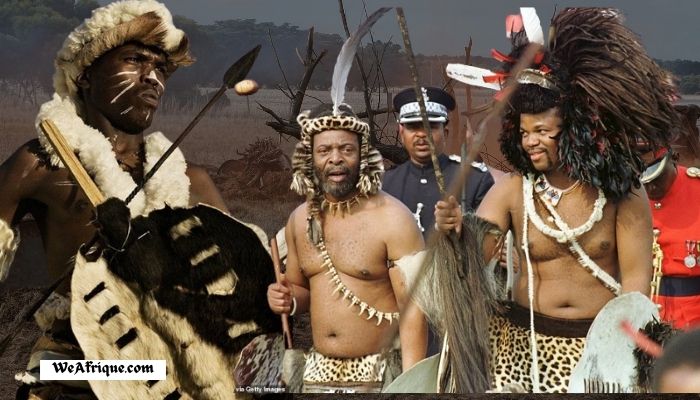
The warrior’s outfits were worn by Zulu men prior to the colonization of South Africa. The Zulu warriors believe that victory is ensured by the way they appear. A typical Zulu warrior’s outfit is made up of four pieces; The first is the Mbata which is a chest and back cover made from animal skin. The second is the ‘Umqhele’ is made of fur and worn as a headband. The third and fourth are Slene and Ibheshu which are used as front and back covers respectively. Their dress sense also confirms their strength and readiness for war.
In modern-day, the outfit is not only worn by Zulu warriors alone but even by women to show their fierceness and strength.










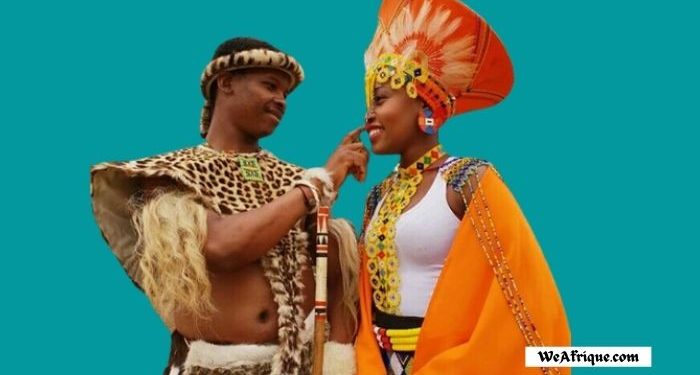










Discussion about this post